
People across the world have heard about the pre-schools of Reggio Emilia, which were set up in the Italian province of the same name in the years following the Second World War. Today, they remain a bastion of world-leading practice, with a ‘pedagogy of listening’ to and valuing children.
Reggio schools were founded by members of the Union of Italian Women (UDI), an anti-fascist association founded in 1944, and the Catholic Italian Women's Centre, as a direct response to the war. These self-managed pre-schools promoted a new values-based type of learning, based on open dialogue and mutual respect, equality and self-confidence, all essential in resisting oppressive institutions and tyranny. These ‘formed a cultural and social legacy that would become integral to the identity of Reggio Emilia's future educational project’ (www.reggiochildren.it).
By the 1960s, the municipality had set up its own educational services to include the first ‘scuole dell’infanzia’ (pre-schools for ages three to six) and, later, the infant/toddler centres for birth to threes. The educationalist Loris Malaguzzi became involved, collaborating and contributing to the project and its principles.
I was finally able to realise a long-harboured desire to see the pre-schools of Reggio Emilia for myself in June last year as part of a Sightlines study tour. We were very fortunate to have with us Wendy Scott OBE, who has made many visits to Reggio over the years. At the closing lecture, she said, ‘There are clear parallels with the current conflict in Ukraine and the value of working with families to underline the critical importance of what happens for children in their early years. I have high praise for the way that the Reggio centres pay attention to children's thinking and help them to express their ideas and questions; there can be no better investment in the future.’
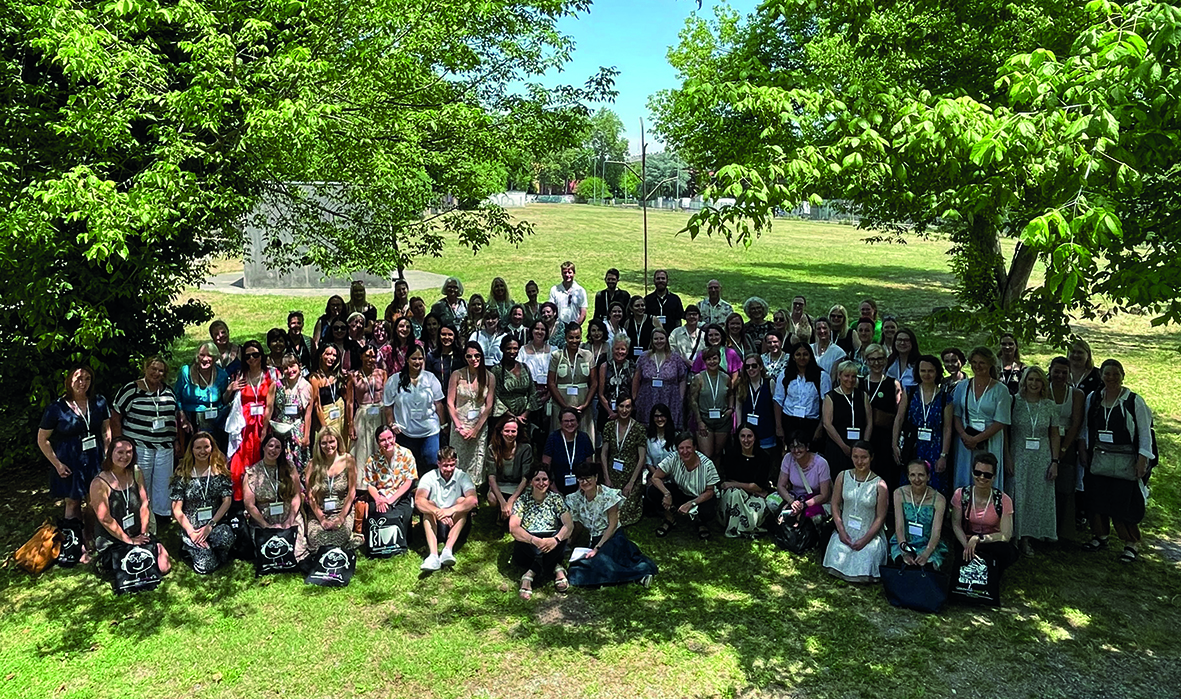
PEDAGOGY OF LISTENING
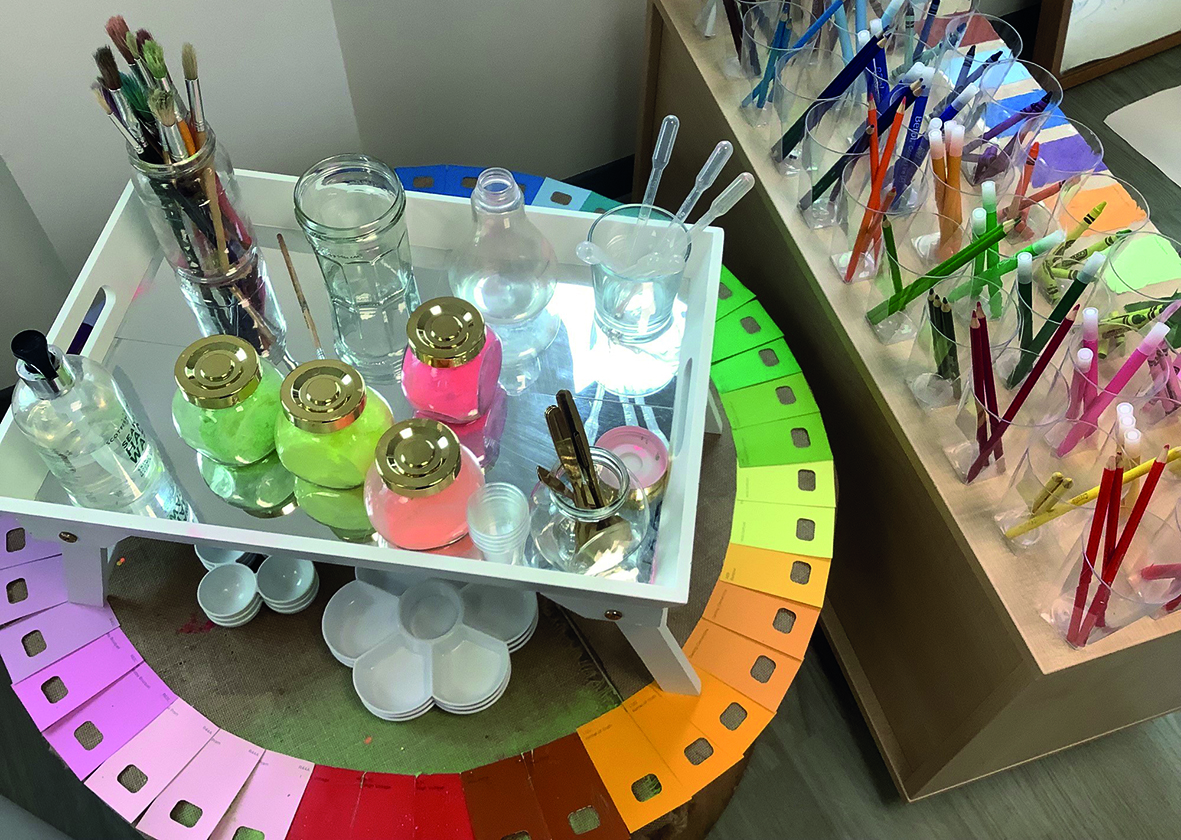 It was inspiring to see how the participatory nature of the Reggio approach spreads to staff; for example, a school cook was included as a panel member in one of the lectures we attended. Not only are mealtimes and nutrition an important aspect of the provision but the cook is involved in decision-making just as much as any other staff member. Dr Lynsey Burke (lecturer, University of Dundee) commented on how inspiring it was to see how participation is ‘interwoven throughout the fabric of the Reggio community… brought to life by pedagogies of listening and relationships. At the heart of Reggio, children are valued and respected as meaning-makers and as researchers.’
It was inspiring to see how the participatory nature of the Reggio approach spreads to staff; for example, a school cook was included as a panel member in one of the lectures we attended. Not only are mealtimes and nutrition an important aspect of the provision but the cook is involved in decision-making just as much as any other staff member. Dr Lynsey Burke (lecturer, University of Dundee) commented on how inspiring it was to see how participation is ‘interwoven throughout the fabric of the Reggio community… brought to life by pedagogies of listening and relationships. At the heart of Reggio, children are valued and respected as meaning-makers and as researchers.’
Back home, Laura Jarvie, head teacher at Carronshore Primary, Falkirk, said the impact of her visit has spread from the early years throughout the school and led to Reception to Year 7 teachers developing their open play provision even further. She said, ‘This visit led the teachers to working throughout the summer on our nursery environment (our new building was completed at the end of July so the timing was perfect). All the teachers visited our nursery and we shared pictures from our visit to Houghton [a Reggio nursery in Sunderland] and Reggio. A Year 7 teacher commented that they could see these environments being appropriate for any age of child.’
Carronshore's new areas include The Beach (water/sand area with provision for related areas like plumbing), The Studio (for art, craft, writing. etc.), The Garage (for construction) and The Theatre (for dressing up/imaginative play).
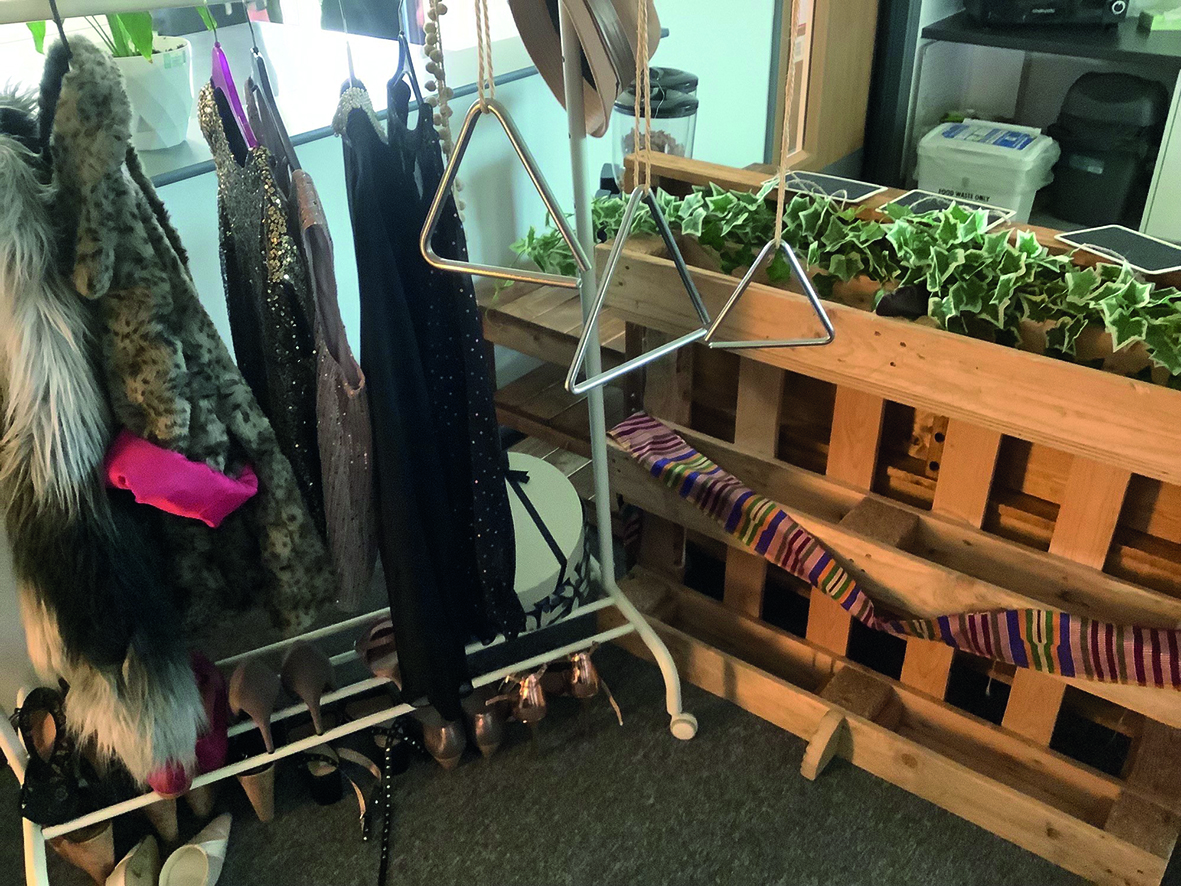 We were not able to observe practice in action due to pandemic restrictions, so there was a sense that ours was a very different experience from that of anyone who had visited Reggio in the past. We could only wander through the settings admiring the light-filled spaces, the ateliers, dining rooms and gardens and imagine the sounds of children and adults playing, investigating, challenging and collaborating with each other. I was struck by how they were not so unlike the best settings here in the UK or anywhere in the world. The ‘Nido’ (infant toddler setting) I visited was not overstuffed with resources and there was a degree of simplicity and homeliness that was soothing and restful. The layout did not dictate the learning for the following day; instead there was a degree of careful arrangement of natural and other play resources to promote engagement. Of course, the major difference for us in the UK is that the children in Reggio remain in their pre-schools for at least a year longer.
We were not able to observe practice in action due to pandemic restrictions, so there was a sense that ours was a very different experience from that of anyone who had visited Reggio in the past. We could only wander through the settings admiring the light-filled spaces, the ateliers, dining rooms and gardens and imagine the sounds of children and adults playing, investigating, challenging and collaborating with each other. I was struck by how they were not so unlike the best settings here in the UK or anywhere in the world. The ‘Nido’ (infant toddler setting) I visited was not overstuffed with resources and there was a degree of simplicity and homeliness that was soothing and restful. The layout did not dictate the learning for the following day; instead there was a degree of careful arrangement of natural and other play resources to promote engagement. Of course, the major difference for us in the UK is that the children in Reggio remain in their pre-schools for at least a year longer.
THE COLLECTIVE AND THE INDIVIDUAL
Inevitably there was a lot of discussion about the differences between the Reggio municipality and other parts of the world, with all of us feeling frustrated at the difficulties we face in maintaining the best quality experiences for our children. As Laura Jarvie pointed out, ‘We don't need hierarchy or inspectors for quality education. We need genuine collaboration and co-responsibility.’ From Canada, Rachel Phillips noted, ‘What I realise is that our culture leans towards an individual approach, for example motives such as “How can I make my school better?”.’ She observed that the Reggio approach goes ‘beyond the focus on the individual and that childhood and children's thoughts are respected and embraced by a community that takes them seriously.’
Rather than pre-defined programmes or sequences for learning, Reggio children and adults are involved in co-construction and design (progettazzione) as they explore and research their interests together. The many different creative ways children express and understand themselves and their world (the ‘100 languages’ through which they can express their ideas) are made visible through joint ‘documentation’ which gives structure to children's theories and provides a ‘common legacy’ to refer back to. Reggio's children are seen as having ‘rights’ – children with SEND have ‘special rights’ – and are considered to be ‘active protagonists’ in their own learning.
The environment and spaces are ‘designed and organised in interconnected forms and offered to children and adults as places to live together and research. The environment interacts, modifies and takes shape in relation to the projects and learning experiences in a constant dialogue between architecture and pedagogy’ (www.reggiochildren.it). This is also true of the organisation of time and work of both adults and children, creating dialogue and responsibilities for a shared sense of belonging. Since returning from Reggio, Brenda Lattimore (nursery proprietor, Dublin) has introduced two sessions for reflective practice each week, devoted to project work and pedagogical practice. She has also made clay available in all areas, having seen the way clay is used so effectively by Reggio children to ‘make real’ their thoughts, theories, understanding and interpretations of their world (see case study).
RE-ASSESSING PRACTICE
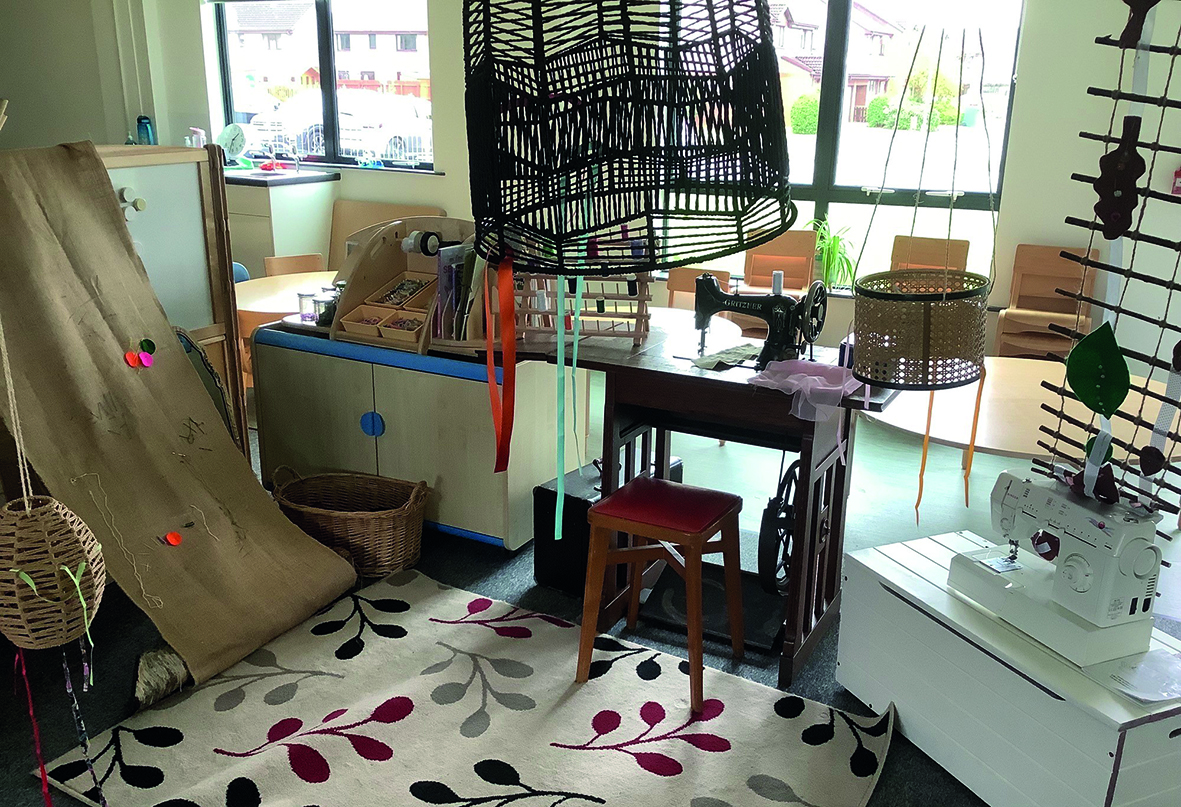 The trip reignited for participants a strong sense of what really matters – relationships, family, community, participation, environment and, of course, play. Several described how they feel re-energised to help bring about positive changes – not just within their own settings but across the sector and within their communities. Some felt affirmed in their current practice and values, which matters when many are having to fight on a daily basis for what they believe is important in the care and education of children.
The trip reignited for participants a strong sense of what really matters – relationships, family, community, participation, environment and, of course, play. Several described how they feel re-energised to help bring about positive changes – not just within their own settings but across the sector and within their communities. Some felt affirmed in their current practice and values, which matters when many are having to fight on a daily basis for what they believe is important in the care and education of children.
It seems to me that the power of Reggio lies not necessarily in the design of environments or teaching approaches, and definitely not in simplistic learning outcomes, but in the active commitment to children – as citizens, active participants and co-constructors of their growth and learning. Wendy Scott reminded us that Reggio children moving into primary school are seen to have ‘an extra pocket’ in which to store all the richness of their learning in the pre-schools, both concrete and abstract, ready to be drawn on throughout their lives.
I left Reggio feeling our aim must be to provide all children with an extra pocket – and to help to fill each with the confidence, resourcefulness and enthusiasm for learning that will benefit them for life.
Reggio
Reggio philosophy is based upon the following set of principles:
- Children are strong powerful learners with rights as well as needs.
- Children possess ‘100 languages’ and communicate in many ways, so must be able to use a range of media and methods of expressing themselves.
- The emergent curriculum stems entirely from children's needs and interests.
- Families and community are partners in the learning process.
- Educators are equal learners using their documentation to nurture children's learning and growth.
- The environment is the third teacher and must be enriching and supportive.
Loris Malaguzzi's work became central to the ethos of the centres and pre-schools of Reggio Emilia, of which there are now more than 80. His work builds on the theories of Piaget, Vygotsky, Erikson and Dewey. He said education too often relies on verbal language and wrote the ‘100 languages’ poem, which talks about how a child has many ways of thinking, playing and speaking. It ends by saying school tells the child
‘to think without hands, to do without head
to listen and not to speak
to understand without joy
to love and to marvel only at Easter and Christmas.
They tell the child:
to discover the world already there
and of the hundred, they steal ninety-nine.
They tell the child:
that work and play
reality and fantasy
science and imagination
sky and earth
reason and dream
are things that do not belong together.
And thus they tell the child
that the hundred is not there.
The child says: No way. The hundred is there.’
CASE STUDY: Bizzy B's Preschool, Loughshinny, Dublin
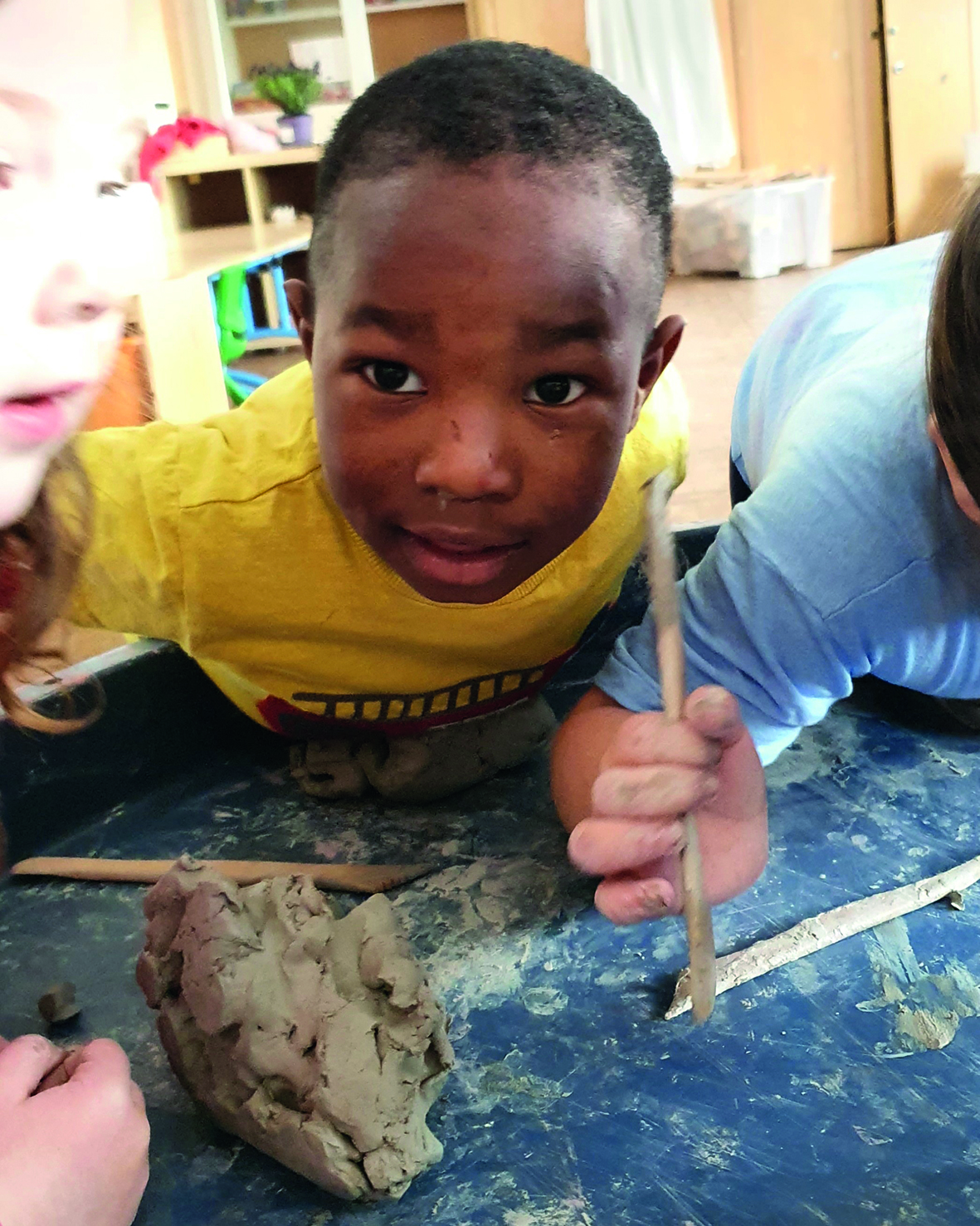 Manager Brenda Lattimore says, ‘Today I presented you and your friends with a large slab of clay. We wondered what would happen to the clay if we dropped it from a height, used the full force of our bodies or pressed our fingers into it? How did it change and how did it alter? We explored its texture, temperature and smell. I stood back and watched. You pummelled it with your fists, poking it with your fingers, pressing it between the palms of your hands, and then using the full force of your upper body you flattened the clay against the tray with your chest. With each action you inspected the impact you had.
Manager Brenda Lattimore says, ‘Today I presented you and your friends with a large slab of clay. We wondered what would happen to the clay if we dropped it from a height, used the full force of our bodies or pressed our fingers into it? How did it change and how did it alter? We explored its texture, temperature and smell. I stood back and watched. You pummelled it with your fists, poking it with your fingers, pressing it between the palms of your hands, and then using the full force of your upper body you flattened the clay against the tray with your chest. With each action you inspected the impact you had.
‘After a period of time, you presented me with a layered structure and explained that it was a turtle. I mentioned enthusiastically that I would love to hear more about your turtle, and this is what you told me: “The turtle goes in the water, and he gets eaten by a shark. The turtle punches the shark in the face so he can't eat him. He swims fast away, and he likes to eat tuna fish. The turtle would be called Lenny. He likes to swim. He has a booster on him to make him swim fast and he swims to Africa, and he goes on the sand. He plays with his friends, and they play Paw Patrol games. Then they all swim back really fast. He swims back to the park where the tractor is. He plays on the tractor with his friends. There are seats on the tractor and a TV. They use the ‘mote control and they watch Paw Patrol. Then they go home far away. They don't go back to Africa. Then they go into the sand, and they go into an egg. Then the mummy turtle says, ‘Oh, the baby is in the egg.’ The baby stays in the egg until he has a tummy ache, he gets sick. He wiggles out of the egg, and he goes into the sea, and he stays there.”
‘I do not believe this story would have emerged without working with the clay and allowing it to take you on this literary journey.’
MORE INFORMATION
- Anne O'Connor went on a Sightlines International Study Tour (www.sightlines-initiative.com)
- www.reggiochildren.it
- Bringing the Reggio Approach to Your Early Years Practiceby Pat Brunton and Linda Thornton
- The Hundred Languages of Children: The Reggio Emilia Approach – Advanced Reflections by Carolyn Edwards, George Forman and Lella Gandini









